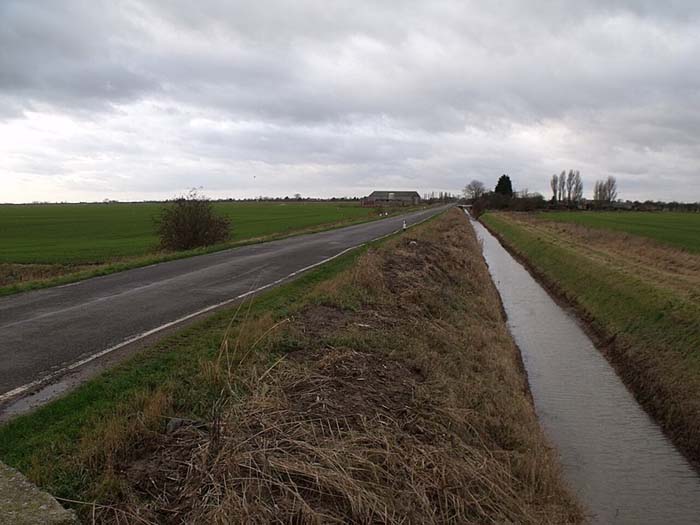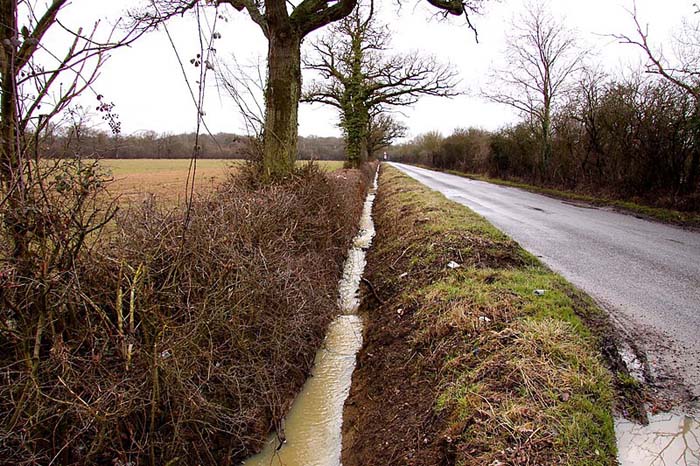
For roads to last, be safe, and be usable, civil engineers must design them with drainage systems in mind. Road surfaces must have adequate drainage to avoid decreased traction, structural damage, and an increase in accidents due to water accumulation. A road drainage system’s primary function is to collect, transport, and dispose of surface and underground water from the road and its surroundings.
Importance of a Road Drainage System
A road drainage system is essential to keeping roads safe, long-lasting, and functional. Here are some key points about road drainage:
- Protecting the environment
- Contaminant Management
Safeguarding local ecosystems from erosion and sedimentation, as well as decreasing the likelihood of flooding, are two primary functions of a well-designed road drainage system.
- Controls Runoff
By reducing water damage, a proper road drainage system reduces the burden and expense of road maintenance and repairs.
- Economic advantages
- Decreased Repair Costs
Repair costs will be lower in the long run if road damage is less common and less severe.
- Improved Transportation Efficiency
Well-maintained roads provide efficient transportation by reducing delays and increasing economic productivity.
- Improves road safety
- Prevents Freezing Conditions
With appropriate drainage, ice production on roadways in cold weather can be prevented. This helps to remove water quickly, reducing the risk of accidents.
- Minimizes Hydroplaning
Well-drained roadways reduce the likelihood of hydroplaning, a condition in which a vehicle loses traction on the road due to water accumulation.

- Improving user comfort
- Minimal Splashing
Water spray and splash, due to improper drainage, can make cyclists and pedestrians uncomfortable and impair drivers’ visibility.
- Smooth Travel
When roads have adequate drainage, road users find it easier and more pleasant.
- Compliance with Regulations
- Legal Requirements
The construction and maintenance of roads, as well as drainage systems, are governed by rules and regulations in many areas. To avoid legal issues and fines, you must strictly adhere to these requirements.
- Prevents road damage
- Protecting the Pavements
To avoid structural damage, cracks, potholes, and other issues, proper drainage is essential. Water seeping into the pavement layers can cause these problems.
- Controlling Erosion
By diverting runoff away from roadways, a well-designed drainage system prevents the likelihood of embankment and roadbed erosion.
- Increases road durability
- Maintenance Cost Decrease
Proper drainage reduces water damage, lowering the burden and expense of road maintenance and repairs.
- Structural damage prevention
Water accelerated the degradation of road materials. By avoiding structural damage due to water, an effective road drainage system prolongs the road’s lifespan.
The importance of properly draining roads cannot be overstated. Contributing to economic efficiency, preserving infrastructure, ensuring safety, and protecting the environment are all key aspects of road design and maintenance. The long-term viability of transportation networks depends on investments in appropriate road drainage systems.
Components of a Road Drainage System
A road drainage system’s proper management of both surface and underground water is critical to ensuring the longevity of road infrastructure. A road drainage system primarily comprises the following components:
- Surface Drainage:
- Catch Basins
The system transfers surface water to underground drainage systems via ditches and pipes.
- Side Ditches
Drains in roadside ditches collect and transfer runoff.
- Drainage Inlets/Grates
The underground drainage system has entry points.
- Gutters and Curbs
The drainage system receives runoff from the road.
- Roadway Cross Slope
It ensures that water drains away from the road surface and down the sides.
- Subsurface Drainage:
- Longitudinal Drains
Water is collected and directed away by pipes from underdrains that run parallel to the road.
- Drainage Layers
Various layers of porous materials are placed under the road to allow water to flow to the underdrains.
- Underdrains
To collect and transport groundwater, perforated pipes are laid beneath the road surface.
- Conveyance Systems:
- Culverts
In places where roads meet natural streams, there are structures that let water flow under the road.
- Storm Sewers
Water is conveyed to an appropriate outlet via underground pipes.
- Outfall and Disposal Systems:
- Outfall Channels
Channels transport water from urban areas into natural waterways.
- Retention/Detention Ponds
To minimize peak discharge rates, temporarily store runoff.
- Outfall Structures
This is the point at which the runoff from the drainage system enters waterways such as streams and rivers.
- Sediment and Erosion Control:
- Silt Fences
Makeshift dams to keep dirt and debris from flowing away from building sites.
- Riprap
At discharge sites, rocks or other erosion-prevention measures are installed.
- Additional Components:
- Manholes
They assist in inspecting and repairing the entryways to underground drainage systems.
- Swales
In order to slow down and filter surface runoff, shallow channels are constructed.
Minimizing water damage to the road structure, preventing flooding, and preventing water accumulation on road surfaces are all goals of an effective road drainage system. The road network’s long-term durability and safety depend on these components being designed, built, and maintained properly.
Design Considerations
Road Use
In order to endure the continual wear and tear, roadways with heavy traffic need drainage systems that are more resilient.
Climate
To manage massive amounts of water, areas with high snowfall or rainfall require more comprehensive drainage systems.
Soil Type
How well various soils drain depends on the type of soil. Soils that are clayey, as opposed to sandy, need a drainage system that is more effective.
Topography
Drainage systems are influenced by the surrounding environment. To handle rapid water flow, more durable systems are needed on steeper terrains.
Conclusion
For roads to be functional, long-lasting, and safe, their drainage systems must be carefully planned. It makes use of both above- and below-ground components to control water flow and avoid harm. A road drainage system designed by engineers can mitigate the negative impacts of water collection on roadways and their users by taking into account variables including road use, soil type, topography, and climate.
